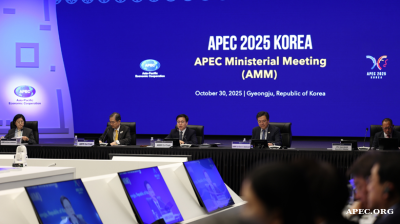Mexico’s plan to sharply raise import duties on Asian goods, particularly Chinese automobiles, has triggered an immediate diplomatic warning from Beijing and added a fresh layer of complexity to North America’s trade dynamics. The measure, buried in a wider fiscal proposal for 2026, seeks to impose tariffs of up to 50% on vehicles and other imports from countries without trade agreements with Mexico.
According to the Financial Times, last week's decision follows sustained pressure from Washington, which has criticised Mexico for allowing Chinese manufacturers to use its territory as a springboard to circumvent high US tariffs. North America’s trade pact, the United States-Mexico-Canada Agreement (USMCA), is due for review next year, and US officials have repeatedly raised concerns that Chinese goods are entering the bloc through Mexico. Almost 90% of Mexican exports to the US currently enjoy tariff-free access.
The tariff package covers nearly 1,500 product categories, including textiles, steel, footwear, glass and electronics. The automobile sector, however, is the central target. Light vehicles imported from Asia, currently facing duties of 15 to 20%, would be taxed at 50%, the maximum permitted under World Trade Organization rules. Mexico was the world’s largest buyer of Chinese cars in the first half of 2025, ahead of the UAE and Russia, according to Shanghai-based consultancy Automobility.
China has sternly warned Mexico to “think twice” before implementing the measure. The Ministry of Commerce said Beijing would “take necessary measures to resolutely safeguard its legitimate rights and interests” and urged Mexico to avoid undermining bilateral cooperation. El Economista reported that the Chinese government framed the move as “coercion” and cautioned that it would respond proportionately.
Mexican officials, meanwhile, argue that the initiative is not directed at a single country. President Claudia Sheinbaum stated that the tariffs are intended to “strengthen national production” under her flagship “Plan Mexico” and insisted that her government sought “no conflict with any nation”. Economy Secretary Marcelo Ebrard pointed to the trade imbalance as justification, noting that Mexico "imports eleven dollars’ worth of goods from China for every dollar it exports." The deficit, he said, was “very inconvenient” for domestic industry.
The potential consequences are multifaceted. Experts interviewed by the Financial Times and El País stressed that higher tariffs will likely generate tax revenue and address domestic political pressures but will also raise consumer prices and inflationary pressures. Ebrard himself admitted the measure could lift inflation by 0.3%. Former deputy economy minister Juan Carlos Baker observed that the decision marked a departure from Mexico’s traditional emphasis on low-cost inputs, suggesting that protecting strategic industries now outweighs cheaper supply chains.
The policy’s timing also intersects with weakened manufacturing indicators. According to Mexico’s statistics agency (INEGI), industrial output fell 1.2% in July 2025, with manufacturing contracting 1.8% year-on-year. El País noted that this backdrop of declining capacity utilisation strengthens the government’s narrative of defending domestic jobs from subsidised Chinese imports.
From Beijing’s perspective, the move threatens its growing footprint in Mexico. More than 20 Chinese auto and parts manufacturers announced over $7bn in investments in Mexico between 2022 and 2024, according to data cited by CNBC. Yet not all projects have materialised, and the proposed duties may stall further expansion. BYD, China’s leading electric carmaker, has not advanced on a long-anticipated Mexican factory.
Regional implications extend beyond bilateral trade. Infobae argued that Beijing’s response to Mexico also serves as a warning to other Latin American economies, such as Brazil, Peru and Chile, which have deepened reliance on Chinese investment in recent years. The publication framed China’s posture as authoritarian and coercive, pointing to precedents in Africa and South America where Beijing linked access to markets and financing with political leverage.
Yet despite the rhetoric, analysts believe China’s ability to retaliate against Mexico is limited. As former Mexican ambassador to Beijing Jorge Guajardo told El País, “Mexico exports practically nothing to China. We have a trade deficit of 17 to 1.” This asymmetry reduces the potential damage of Chinese countermeasures.
The tariff proposal must now clear Mexico’s Congress. While the ruling Morena party holds a majority, the package could still be modified during debate. Even so, most economists expect it to pass largely intact, given its centrality to the 2026 budget and Sheinbaum’s political alignment with Washington.
In effect, Mexico’s plan is just as much about geopolitics as economics. By aligning more closely with the Trump administration's hawkish stance on China, Mexico aims to safeguard its privileged access to North American markets, even at the cost of straining ties with Beijing. Whether the long-term benefits of protecting domestic industry outweigh the risks of higher prices and reduced foreign investment remains uncertain, but the proposal has already reshaped the contours of Mexico’s trade policy.
News

Viktor Orban facing delicate balancing act to persuade Donald Trump to ease pressure on Hungary over Russian sanctions
The Hungarian prime minister, long admired in MAGA circles and hailed by Donald Trump as a “great leader” now finds himself for the first time at odds with the US president over the latest US sanctions on Russia.

Trump–Xi dialogue in Busan aims to cool tariff dispute
US President Donald Trump and Chinese President Xi Jinping began direct discussions on October 30, marking their first in person meeting since Trump returned to the White House.

South Korean parties clash over tariff deal with the United States
The Democratic Party has celebrated the deal as a diplomatic success that protects national interests, while the conservative People Power Party argues that the government misled the public about the scale of South Korea’s cash investment in the US

Hasina says supporters to boycott Bangladesh election
Hasina asserted that millions of her and Awami League’s supporters are expected to boycott the upcoming 2026 national polls after authorities barred the party from taking part.



